The harpoon is a tool that dates back to prehistoric times; however, the harpoons made from the antlers of caribou by the Inuit people hold incredibly special secrets.
The image below shows an object excavated from the Arctic region – a harpoon tip made from caribou antler measuring 131×12mm. This artifact belonged to the Inuit and has been preserved in permafrost in the Arctic for centuries, making it exceptionally well-preserved with hardly any weathering or damage, save for a layer of oxidation over time.
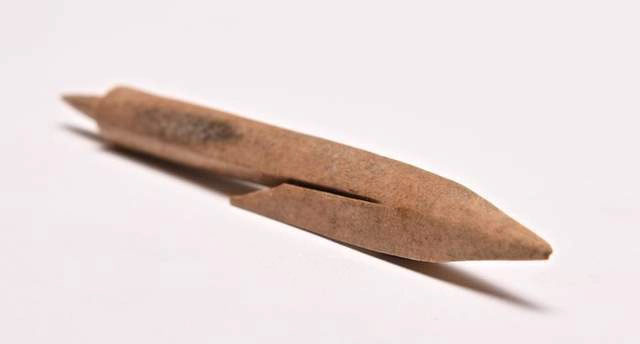
Harpoon tip made from caribou antler measuring 131×12mm.
The Inuit, also known as “Eskimos,” are distributed within and outside the Arctic Circle from Siberia and Alaska to Greenland. Historically, they primarily relied on fishing and hunting marine animals in their region. According to traditional Inuit cultural patterns, they have fully adapted to this extremely cold, snow-covered environment.
The Inuit live in an environment with limited plant food (only certain types of berries and young leaves are edible in summer), and their food sources generally include caribou, seals, walrus, whales, and various fish found in the Arctic.

This type of harpoon is a traditional hunting tool and weapon of the Inuit, closely linked to their production and lifestyle, playing a crucial role in Inuit culture.
Caribou antlers are highly durable, and harpoons made from this material can penetrate the fur of most Arctic mammals, including polar bears.
This type of harpoon is usually mounted on the shaft of an arrow or spear, which the Inuit then use to hunt larger fish like salmon, as well as marine mammals like seals, and even polar bears.
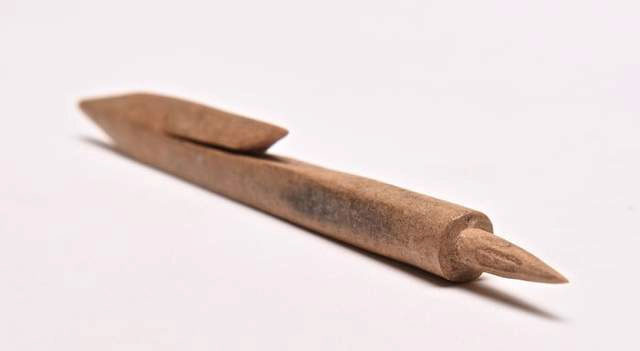
This type of harpoon is usually mounted on the shaft of an arrow or spear.
However, when hunting smaller prey, this harpoon is attached to thin lines and functions similarly to fishing hooks. Due to its unique design, once embedded in the prey, the harpoon becomes firmly lodged inside and cannot escape naturally.
The Inuit also use this type of harpoon to create a weapon that can automatically detach the harpoon from the shaft after hitting or piercing the prey. Once the Inuit shoot the prey with this weapon, the harpoon is forced and detached from the shaft, preventing the prey from being fixed to the shaft during the struggle and allowing it to escape.
Additionally, after the harpoon with barbs strikes a seal or other animals, even if it does not hit a vital spot or kill the prey immediately, it can still cause the prey to bleed continuously, leading to death from excessive blood loss. It can be said that this harpoon is the culmination of knowledge the Inuit have gathered over thousands of years, and it is key to their survival in the Arctic.
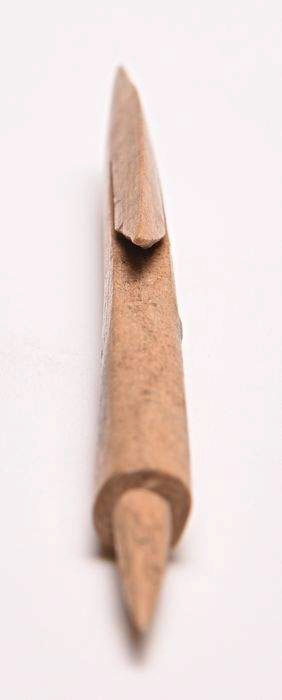
This harpoon is key to the survival of the Inuit in the Arctic.
During summer hunts, the Inuit travel to the sea using Arctic kayaks (typically made from multiple layers of seal skin), bringing tools including bows, arrows, harpoons, and spears to hunt seals that often roam the area in search of prey. Trained from a young age, most Inuit hunters have excellent vision and can spot the movement of prey from a great distance. Once the Inuit find their target, they quietly stalk and, as they get closer, reduce their speed as much as possible, paddling gently and silently to approach the seal.
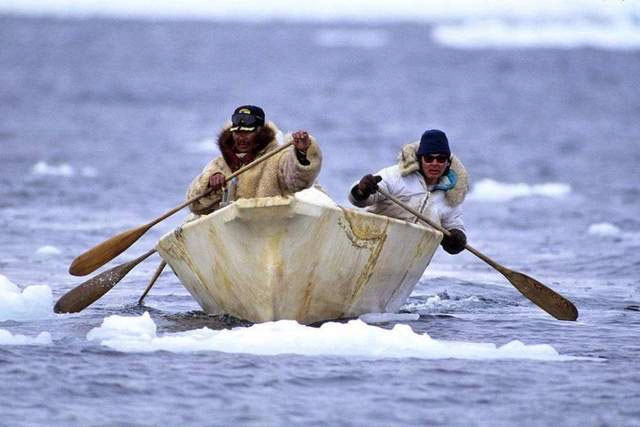
The Inuit travel to the sea using Arctic kayaks.
When within range of their weapon, the Inuit hunter will quickly shoot an arrow or throw a harpoon with great force. This is a test of the hunter’s patience and skill; if not careful, the seal may dive underwater and escape. Even if you hit a seal, it does not guarantee you will catch it, as seals are strong and can struggle vigorously after being injured, even pulling the kayak a considerable distance. Therefore, the Inuit must exhaust the seal’s strength as quickly as possible before approaching, killing it, and bringing it back to shore for processing.
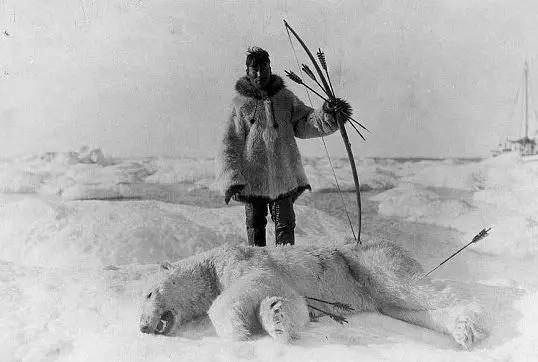
The Inuit must exhaust the strength of the animals as quickly as possible before approaching them.
In winter, when the sea freezes due to the cold, the Inuit use a different method to hunt seals.
Since seals are mammals that rely on lungs to breathe, they will suffocate if they do not breathe air, so they must frequently surface to breathe or rest on the ice. To ensure their breathing, seals will look for breathing holes on the ice or create them, and these breathing holes are key for the Inuit to hunt seals.
Seals can stay underwater for 7 to 9 minutes each time they come up for air, with the longest being around 20 minutes.
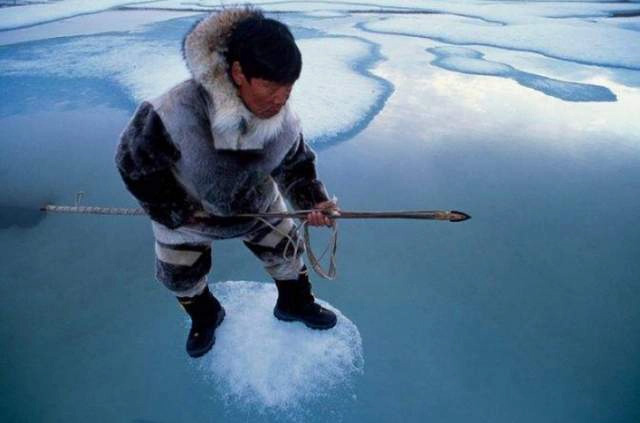
The Inuit find the seals’ breathing holes in the ice, standing still, weapon in hand, waiting silently.
Once the Inuit find a seal’s breathing hole in the ice, they will stand still around the hole, holding their weapons, quietly near the hole, moving as little as possible, remaining silent, and waiting. As soon as they see the seal surface from the breathing hole, the Inuit hunters will seize this precious moment and use their arrows or harpoons to strike the seal, then pull it onto the ice.


















































